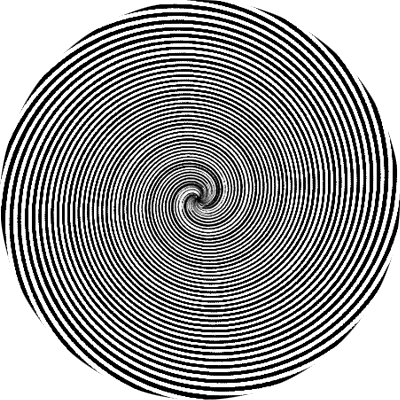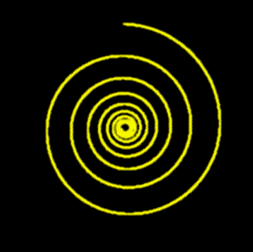The Mystery Revealed
or the
HAND-BOOK OF WELTMERISM
A Supplement to the Author’s New and Illustrated Mail Course of Instruction in His Science of Healing.
By PROF. S. A. WELTMER
1901
{Excerpts}
It is not the purpose of this chapter to enter into an extended discussion of the subject of Hypnotism.Hypnotism as an art is as old as history, as a science it is just beginning to be investigated. Dissertations and treatises on hypnotism abound, the bulk of which is devoted to a discussion of the origin and the development of the science; one writer copying from another both the truths the author has demonstrated for himself and the mistakes he has copied from others. Hypnotism is derived from the Greek word “hypnos”, or sleep; and yet it is only a small part of the phenomena of hypnotism that resembles sleep in any degree. Hypnotism. has been defined so as to include nearly every mental condition from the reverie or day dream down to the deepest trance or the wildest hallucination. The reader will remember that the cardinal doctrine of Weltmerism is the doctrine of agreement: that is, two minds sounding as one, responding to the same vibrations, synchronizing, thinking the same thought. This the author believes and teaches is the basic principle of hypnotism" There can be no hypnotism unless two minds agree; and when two minds, one being positive and the other receptive, agree as to the thought of the positive mind, the passive mind may be said to be in the hypnotic condition. All those conditions in which there is an agreement may be divided into two states; the passive condition of the subject and the hypnotic condition of the subject; the hypnotic condition beginning where the paslive condition ends. In the passive condition there is no change in the relation of the conscious mind to the external world; in the hypnotic condition there is a change in the relation of the conscious mind to the external world. Therefore, the author defines hypnotism to be “a psychic condition in which there is a change in the relation of the conscious mind of the subject to the external world.”Grave mistakes have been made in investigating this science. It has been the popular opinion that only weak-minded, nervous persons were susceptible of being placed in the hypnotic condition. The contrary is the case. In all the experiences of the author and in the almost numberless cases with which he has experimented, it is the person of strong will and power of concentration that is the most susceptible to hypnotic influence; because no one can be hypnotized against his own will. There must be an agreement or a willingness on the part of the subject to be hypnotized before hypnosis can be Induced, Hypnotism, then, is very-largely a self-induced condition, and the one who has most control over his own mental activities is the one who can most readily self-induce the hypnotic condition.The phenomenon of hypnotism, then, being a psychic condition in which there' is a change in the relation of the conscious mind of the subject to the external world, and such condition being largely self-induced and depending upon the agreement of two minds. one mind which must be positive to the agreement and the other passive or receptive to the agreement, the stronger the positiveness of the operator and the stronger the receptiveness of the subject the quicker and deeper will be the influence exerted. The hypnotic operator, then, is one who must be able to control his mind so as to have a dominant, imperial will; the hypnotic subject must be one that is passive or receptive. The successful hypnotist must have self-reliance, self-confidence and a determination to succeed in doing what he undertakes to do.He must have the power of mental concentration, the power to fix and hold his attention on any desired idea or thought for any length of time, This power of which I speak is largely a natural gift, but may be highly cultivated by persistent training in concentration. If a person desires to be an hypnotic operator, he must train his mind to concentration—that is, be able to hold one thought to the exclusion of every other thought; he must cultivate self-reliance, self-confidence and a determination to do what he undertakes to do.Try the following experiment: Take your subject and explain to him what hypnotism is; that it is only an agreement of two minds; that one cannot be hypnotized against his own will; that there is nothing harmful in it; that in fact it is beneficial, as it serves as a means of training even the mind of the subject, training it to passivity, which is just as important to physical welfare as the training of the mind to positiveness. Have your subject stand up, eyes closed, feet together and hands by the side. Tip the head back slightly, the china little elevated. Place your finger on the middle of the forehead; tell the subject, while keeping his eyes closed, to turn his eyes upward as though looking at the spot on the forehead where your finger is, Then make some passes downward over the body of your subject and pass around behind him. Extend your arm with the fingers extended pointing to the base of the brain and will your subject to fall backward to you. Tell him to do whatever he feels like doings and if he feels as if he wants to fall backward, to fall and you will catch him. If your minds have come to an agreement, the subject will fall backward or forward as your will shall determine. …
Another method: Let your patient recline, on a sofa or table in a comfortable position, head not too elevated. Tell him to relax all muscular and nervous tension, to look you steadily in the eye as before, and he will feel sleep stealing over him, his eyelids becoming .heavy. Tell him, when he shall have closed his eyes, to think of some friend or scene that he loves to look upon and call that up as a mental picture and look at it steadily, but not think about it. Then make long passes from the bead downward over the body, giving the suggestion that sleep is stealing over him; that he is sinking into sleep, In ten or fifteen minutes you will see, by the breathing of the patient, the relaxation of the chin and the stillness of the eyelids, that the patient is asleep to everything except your own voice; he is oblivious to all things but you. This is the best method for the giving of suggestions to heal disease; for then the conscious mind is most nearly in abeyance and you are in communication with his unconscious mind; and the suggestions you give him he will take and act upon, thus healing his own diseased body. In the hypnotic condition the suggestion must be repeated often and impressed into the unconscious mind; but in the passive condition the suggestion must be given gradually and not too 'frequently, lest you arouse the subject from the passive to the positive condition. [This paragraph implies that a number of modern energy healing methodologies are inadvertently inducing a hypnotic state.]In the use of hypnotism for the healing of diseases, the last method is the best. Never try to hypnotize anyone for any other purpose than that of giving suggestions for the healing of disease. In experimenting with a friend in order to learn your own power, never give any unpleasant or foolish suggestions, nor try to do the silly things you lee hypnotists do upon the stage. The only legitimate use that can be made of this great power is to relieve one from pain or heal him from disease. …
Remember that hypnotism is not absolutely necessary. The writer has demonstrated that more than 90 per cent of cases that are healed by his system are healed by the passive attitude. In the administration of his system none is never hypnotized except at his own request or when other methods have failed and hypnotism is taken as the last resort. In the thousands that have been healed in the Institution of which the author is the proprietor, not 1 per cent have ever been placed in the hypnotic condition. Weltmerism is not only the science of healing disease without drugs or medicine or any material remedy, but it is the science of doing this without hypnotism. Weltmerism is the term applied to the teachings of the author by a magazine writer who paid him a visit in May, 1899. It was used by him to distinguish the teachings of the author from those of other exponents of Mental Healing and it’s allied branches.
 The Weltmer Institute of Suggestive Therapeutics, established in 1897, consisted of a school and sanatorium. The school consisted of a four year program that included courses in the art of healing and the Philosophy of Health, Suggestive Therapeutics, Anatomy, Physiology, and Pathology and resulted in the degree of a Doctor of Suggestive Therapeutics (D.S.T.).
The Weltmer Institute of Suggestive Therapeutics, established in 1897, consisted of a school and sanatorium. The school consisted of a four year program that included courses in the art of healing and the Philosophy of Health, Suggestive Therapeutics, Anatomy, Physiology, and Pathology and resulted in the degree of a Doctor of Suggestive Therapeutics (D.S.T.).  In 1899 Professor Weltmer wrote a Mail Course in Magnetic Healing, of which some forty-five thousand courses were distributed among the English speaking inhabitants of all parts of the world. This course was little more than a statement of principles, with instructions for the demonstration of the principles stated.
In 1899 Professor Weltmer wrote a Mail Course in Magnetic Healing, of which some forty-five thousand courses were distributed among the English speaking inhabitants of all parts of the world. This course was little more than a statement of principles, with instructions for the demonstration of the principles stated.
In 1900 a concerted attack was made to destroy the Weltmer Method of Healing. Persecutions and prosecutions followed one another in rapid succession until November 17, 1902, when the litigation had finally reached the United States Supreme Court, which sustained Professor Weltmer's work, and among other things declared his methods and practice to be "sound and practical" "legitimate and lawful” and in no conflict with the laws of Congress.Sidney A. Weltmer died in Nevada, Missouri in 1930. The Weltmer Institute of Suggestive Therapeutics remained in operation until 1933.
The Weltmer Institute of Suggestive Therapeutics "Where every known disease is cured without medicine or surgery".


























